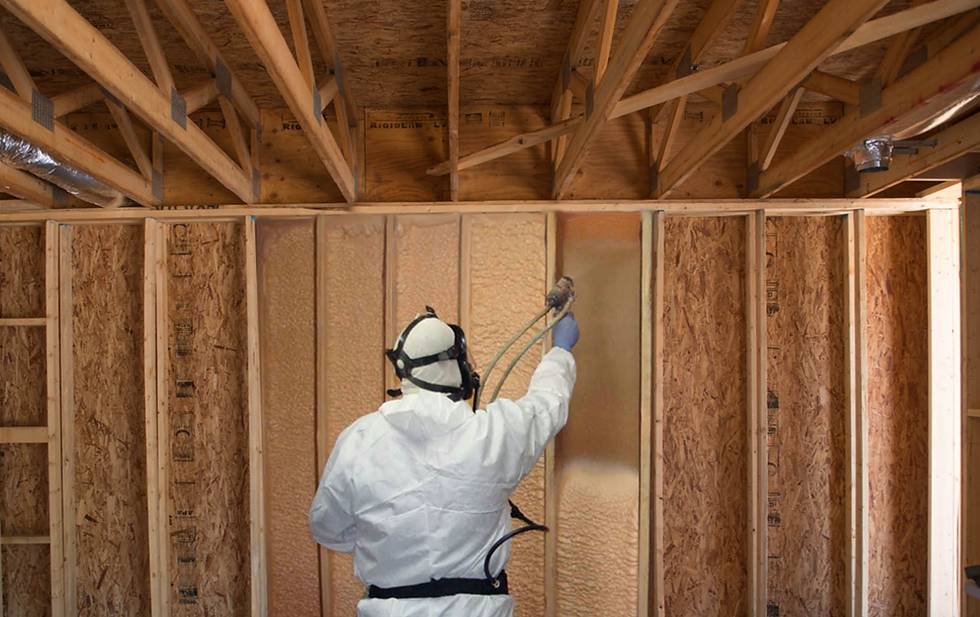Effective Ways to Apply Noise Insulation Foam in Your Home
- kristinannieblog
- Jan 11
- 4 min read

Soundproofing is a vital element when crafting a homely space that's comfortable, serene and free from unwanted noise pollution. The ability to reduce external noise contributes to a more tranquil home environment where you can relax without disruption. Whether it's suppressing the hum of traffic, protecting yourself from noisy neighbours or just keeping your home eco-friendly, soundproofing forms an intrinsic part of creating a peaceful living space.
One secures your home from unwelcomed auditory intrusion, and it fosters an optimistic environment where one can rest, work, or play without disturbances. Especially in today's digital age, where working from home has become the norm, creating a space free from external distractions significantly enhances productivity and mental wellbeing. Hence, soundproofing has gained substantial significance worldwide.
Decoding Noise Insulation Foam
Noise insulation foam, commonly known as acoustic foam, is a specially designed material famous for its sound absorbing properties. Its primary function involves reducing echoes, background sounds and reflections to ensure a quieter environment. It is a popular choice among many homeowners due to its impressive acoustic performance.
In the market, numerous types of noise insulation foams available include egg-crate foam, pyramid foam, and wedge foam. Each of these types has unique sound absorbing properties engineered to cater to specific noise issues. Understanding the difference between these types can help you select the most suitable option when it comes to successful soundproofing for your home.
Understanding the science behind these foams involves recognising how sound waves function. These foams essentially absorb, deflect and, in turn, break down sound waves, thus reducing the amount of sound that makes it through the foam. The secret lies in the porous material of acoustic foams that absorbs sound energy, effectively reducing noise levels.
Why is Noise Insulation Foam an Ideal Choice for your Home?
Choosing noise insulation foam comes with a myriad of benefits. Firstly, it's cost-effective. Unlike other soundproofing methods, buying and installing noise insulation foam doesn't burn a hole in your pocket. In fact, it's one of the most economical soundproofing solutions currently available.
Secondly, the foam is relatively easy to apply. The installation process doesn't necessitate professional aid, making it a perfect DIY project. Despite its simplicity, noise insulation foam achieves efficient noise reduction, establishing a tranquil environment that makes living and working from home more pleasant.
Preparing your Home for Noise Insulation Foam Installation
Before hopping onto the installation part, preparing and assessing your home is crucial. Start by measuring the space where the noise insulation foam will be applied. It not only gives you an idea of how much foam you'll need but also if any additional soundproofing materials are required to maximise the result.
The preparation process requires basic tools like a tape measure, a utility knife or scissors, and high-strength adhesive. Keeping these ready beforehand makes the installation process smoother. Plus, cleaning the wall surface where the foam will be installed to remove any dust or debris is advisable.
A Step-by-step Guide to Installing Noise Insulation Foam
Installing noise insulation foam isn't rocket science. However, it does necessitate careful attention to each step. Start by cleaning the wall surface and then applying strong glue to the back of the foam. Align the foam with the wall and gently press. Be sure to apply pressure throughout, so it sticks evenly.
Hold the foam in place for a moment to let the adhesive work its magic. Repeat this process until your desired wall is covered. Remember, sticking the foam is quite easy; getting it off without damaging your wall is the tricky part, so accurate application and alignment are recommended.
Key Mistakes to Avoid during Installation
But like everything else, there are mistakes to avoid while installing noise insulation foam. Overlapping or creating gaps while placing the foam can undermine the sound-absorbing performance. Similarly, using inferior quality adhesive or not letting it dry completely before moving onto the next piece can cause the foam to fall off.
Inappropriate cutting of the foam can also lead to inefficient usage of the material. So, it's advisable to measure correctly and use sharp tools to avoid rough edges that may not stick properly. Lastly, not assessing the space before starting the installation process may land you in a situation where you start to run out of foam mid-installation.
Maintenance and Care Tips for Noise Insulation Foam
After installation, maintaining the foam for prolonged effectiveness is essential. Keeping the foam clean and free from dust can go a long way in extending its life. Use a vacuum cleaner to remove any dust particles but remember too much harsh cleaning can damage the foam.
Aside from regular cleaning, checking for any signs of wear and tear and replacing the damaged foam promptly can prevent your soundproofing capacity from diminishing over time. After all, noise insulation foam is an investment into tranquillity, and ensuring it lasts is just as important as installing it.
Wrapping Up
While noise insulation foam installation is relatively easy, professional guidance can prevent you from making crucial mistakes. Consulting with an expert or following comprehensive guides like this can ensure a successful application process. Additionally, reviewing essential tips and precautions recommended by professionals can also aid in effective maintenance of the foam.
Conclusion
Noise insulation foam promises to bring serenity to your life, allowing you to enjoy a peaceful home environment. So, chart your course towards tranquillity, consider the guidance mentioned above and start your journey to a noise-free, serene home experience today. Remember, a peaceful abode begins with you taking the first step.







Comments